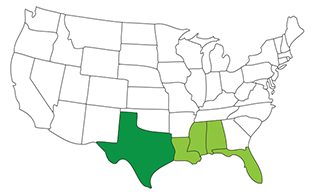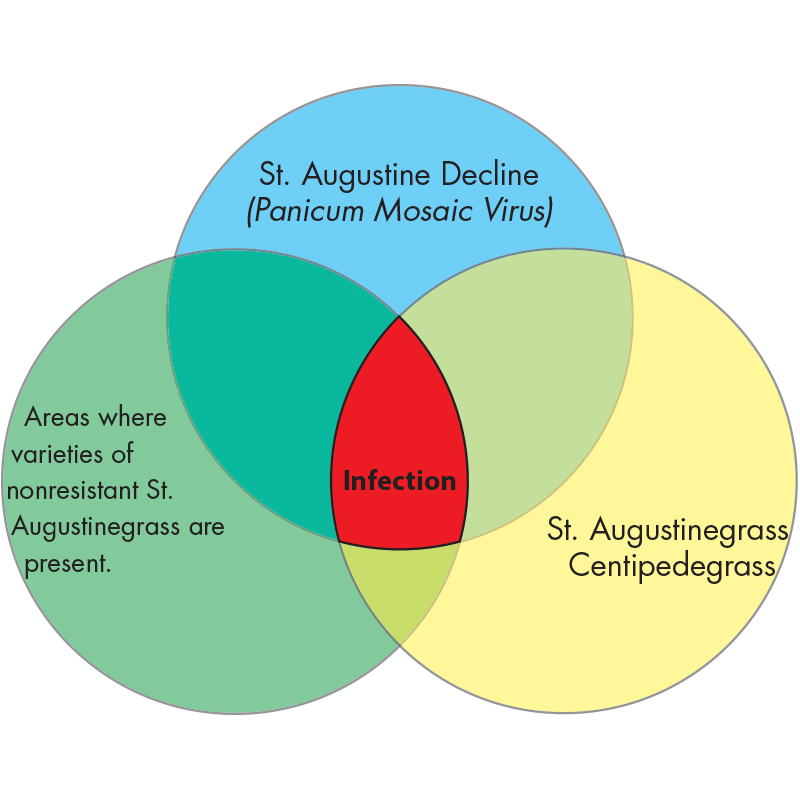
St. Augustine Decline
Panicum Mosaic Virus
St. Augustine Decline is a lawn disease found only along the Gulf Coast of the United States where nonresistant species of St. Augustinegrass grow. Lawn damage caused by St. Augustine Decline can occur year-round in these areas and is caused by a virus.
Identify

Foliar
The initial signs of St. Augustine Decline appear as chlorotic mottling or stippling (light discoloration spots in leaves). These symptoms can resemble iron or zinc deficiencies, mite damage or downy mildew infection. As the lawn disease continues to run its course, chlorosis (loss of normal green color) becomes uniform over the infected area, the grass becomes less vigorous and stolon growth slows dramatically. The longer the grass is infected, the more severe the symptoms become. Roughly three years after initial symptoms are observed—and with additional stresses—the entire infected area can be killed. There is no chemical prevention for St. Augustine Decline —the only form of control for this virus is planting grass types that are resistant. The Texas common variety of St. Augustinegrass is very susceptible, while the Floratam, Bitterblue and Raleigh varieties are resistant to this lawn disease.
Life Cycle
A St. Augustine Decline infection can occur only if all of the following conditions are present: 1. Pathogen: Panicum Mosaic Virus (not a lawn fungus) 2. Host: St. Augustinegrass or Centipedegrass 3. Environment: Areas where nonresistant varieties of St. Augustinegrass are present

Control
Because you can't change your environment, the best way to control St. Augustine Decline is to create conditions that will foster a healthy lawn. Not only will this make your yard unfavorable for St. Augustine Decline growth, but it will also lower your risk of extensive damage should the lawn disease develop—plus you'll have the type of lawn you'll want to live on. For St. Augustine Decline control and lawn fungus treatment, TruGreen® recommends the following cultural control tips: • Plant types of grass that are resistant to the St. Augustine Decline • Clean mowing equipment with a 10% bleach solution to prevent the spread of the virus • During early stages of infection, the grass will still respond to fertilizer applications until the severity increases
Diagram





Facebook
X
Youtube
Copy Link
Email